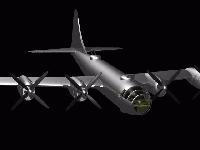
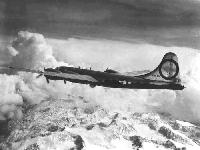
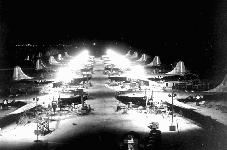
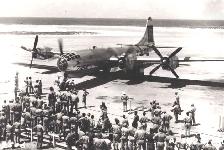
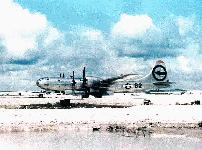
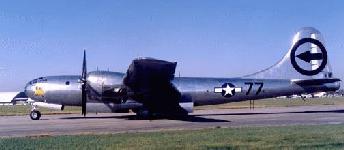
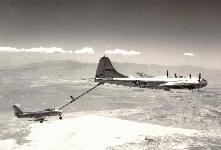
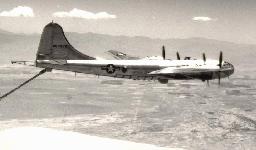
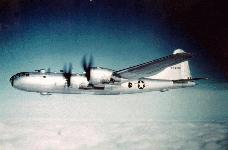
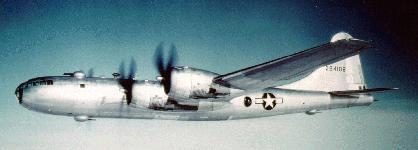




In December 1943, it was decided not to use the B-29 in the European Theater, thereby permitting the airplane to be sent to the Pacific area where its great range made it particularly suited for the long over water flight required to attack the Japanese homeland from bases in China. During the last two months of 1944, B-29s began operating against Japan from the islands of Saipan, Guam and Tinian.
With the advent of the conflict in Korea in June 1950, the B-29 was once again thrust into battle. For the next several years it was effectively used for attacking targets in North Korea.
In order to extend the range of the new generation of jet aircraft, a B-29 was fitted with a flying boom for experiments in air-to-air refueling.
Specifications |
|
| Span: | 141 feet, 3 inches |
| Length: | 99 feet |
| Height: | 27 feet, 9 inches |
| Weight: | 133,500 pounds |
| Armament: | Eight .50-caliber machine guns in remote controlled turrets
plus two .50-caliber machine guns and one 20mm cannon in tail; 20,000 pounds of bombs |
| Engines: | Four Wright R-3350s of 2,200 horsepower each |
| Maximum speed: | 357 mph. |
| Cruising speed: | 220 mph. |
| Range: | 3,700 miles |
| Service Ceiling: | 33,600 feet |
| Cost: | $639,000 |









